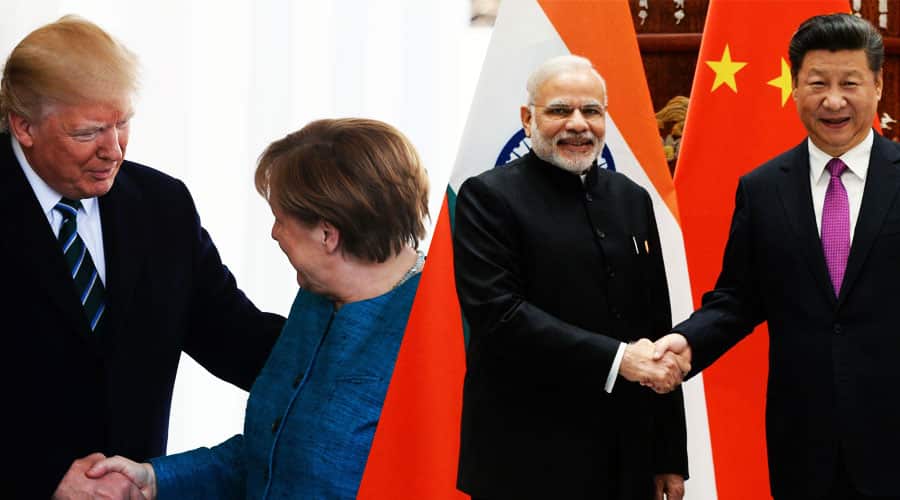Geopolitical risk: the new deterrence to foreign investment

Not since the Cold War have global political tensions exerted such an impact on foreign investment decisions. In this analysis for Financial Times | IE Business School Corporate Learning Alliance, Laza Kekic believes that rising geopolitical risks have become a major constraint on foreign direct investment.
There is a popular, but misplaced, belief that political risks do not feature highly in foreign direct investment (FDI) decisions. Instead, it is thought that companies have been more concerned with their host country’s macroeconomic conditions, its labour costs and availability, and the policy environment.
If there were political risks to consider, senior executives often felt that sophisticated corporate strategies coupled with the availability of insurance schemes would mitigate any worst-case scenarios.
Now, however, political risk is firmly back on the agenda, and it is substantially affecting overall FDI levels.
According to several business surveys, companies have become increasingly worried about key sources of global tension such as global terrorisms and deteriorating relations with North Korea, Iran or Russia. In a poll of 1,500 members of the CFA Institute, a global association of investment professionals, 70% expect investment returns to be compromised by geopolitical uncertainties over the next three to five years.
Meanwhile, AT Kearney’s annual FDI Confidence Index for 2017 identified geopolitical risk as their main ‘wild card’ concern. And a 2017 UNCTAD survey of investors found that while a majority were confident that an economic upturn would bolster FDI, increased geopolitical risks topped their list of investment threats. All these surveys reflect an apparent disconnect between economic bullishness and perceptions of a worsening political environment.
Political instability is no longer an issue just for emerging markets. Brexit, European elections, and US determination to renegotiate key trade agreements have heightened uncertainty in developed markets too. According to the World Economic Forum, these developments have taken place in the context of three broader geopolitical risk factors. First, international cooperation is giving way to unilateral approaches to foreign policy.
Second, declining trust and mutual good faith in international relations is making it harder to solve international problems. And third, technology such as weaponised robotics and artificial intelligence has exacerbated the risk of conflict, while cyberspace has become a domain of conflict.
Measuring the cost
Given that international investment is most likely to flourish in a climate of political calm and multilateral cooperation, it should come as little surprise that rising political risks would deter companies from investing abroad. UNCTAD’s World Investment Report 2017 projects that global FDI inflows will increase by a modest 5% to US$1.8trn in 2017 and to US$1.85trn in 2018, thanks to faster economic growth in all major regions, a strong stock market performance, and a rebound in world trade volume.
But what would the global FDI level be if it wasn’t constrained by current geopolitical risks? It is possible to make a reasonable assessment using a composite index of geopolitical risk that I previously constructed for some 150 economies. It uses a range of component indicators from the prevalence of corruption, ethnic fragmentation and a recent history of conflict and instability to the risk of terrorism, international tensions and the presence of refugees and displaced persons.
In a simple econometric equation FDI inflows in the 150 countries in 2016 are related to the index of geopolitical risk, to countries’ dollar GDP and to an index of the risk of recession for each country. If we assume that all countries’ geopolitical risk was limited to the average index score for the top quintile of the least risky countries, then the estimated foregone FDI for 2017 would amount to some $340bn. This amount would push global FDI above its pre-crisis year of 2007 to $2trn. This analysis suggests that actual inflows, buoyed by improved economic prospects, are indeed being held back by geopolitical risk. The issue can no longer be ignored by company strategists or policymakers.
[starbox id=3092]
This article is published in collaboration with:
[starbox id=2324]
Add CEOWORLD magazine to your Google News feed.
Follow CEOWORLD magazine headlines on: Google News, LinkedIn, Twitter, and Facebook.
This report/news/ranking/statistics has been prepared only for general guidance on matters of interest and does not constitute professional advice. You should not act upon the information contained in this publication without obtaining specific professional advice. No representation or warranty (express or implied) is given as to the accuracy or completeness of the information contained in this publication, and, to the extent permitted by law, CEOWORLD magazine does not accept or assume any liability, responsibility or duty of care for any consequences of you or anyone else acting, or refraining to act, in reliance on the information contained in this publication or for any decision based on it.
Copyright 2024 The CEOWORLD magazine. All rights reserved. This material (and any extract from it) must not be copied, redistributed or placed on any website, without CEOWORLD magazine' prior written consent. For media queries, please contact: info@ceoworld.biz
SUBSCRIBE NEWSLETTER








